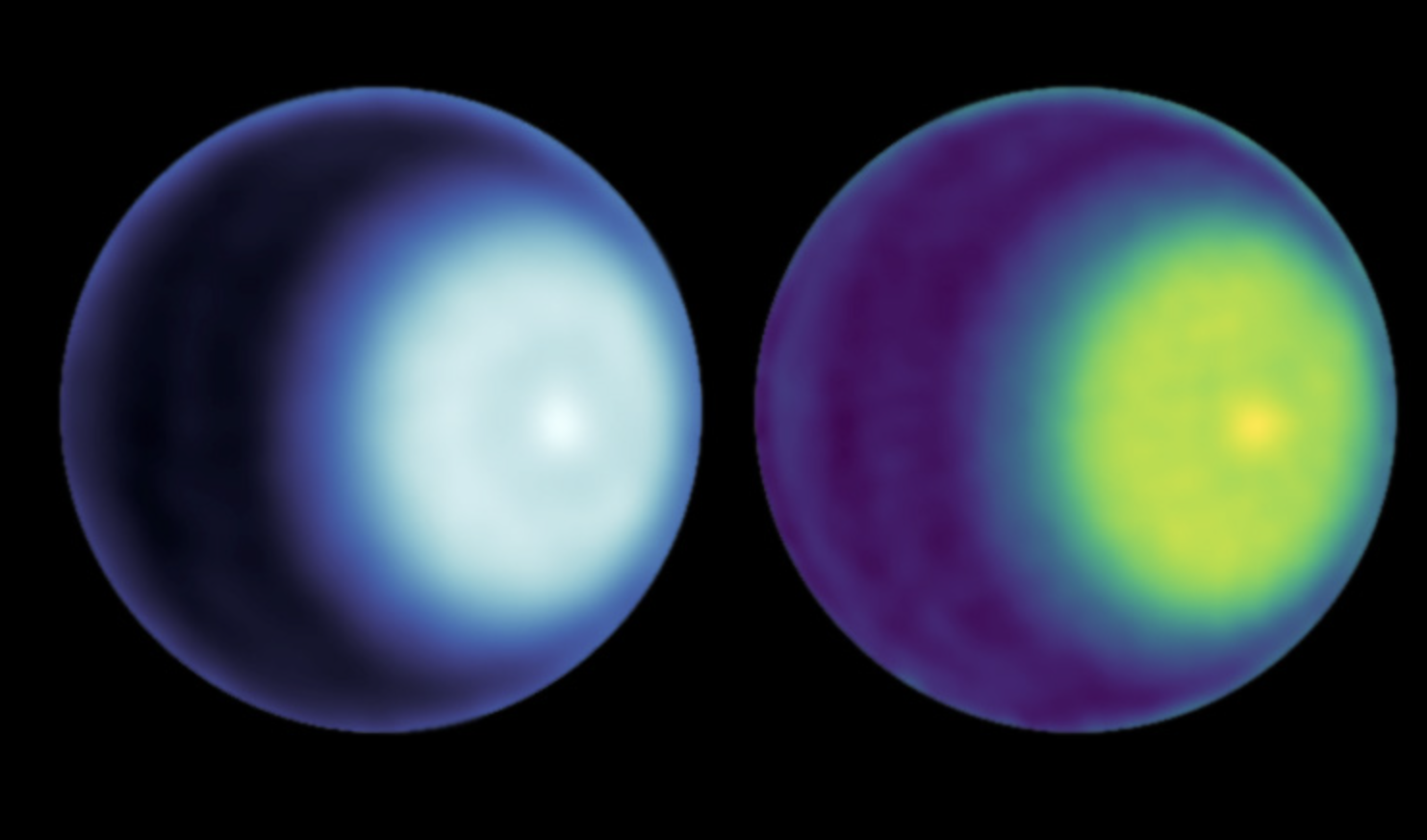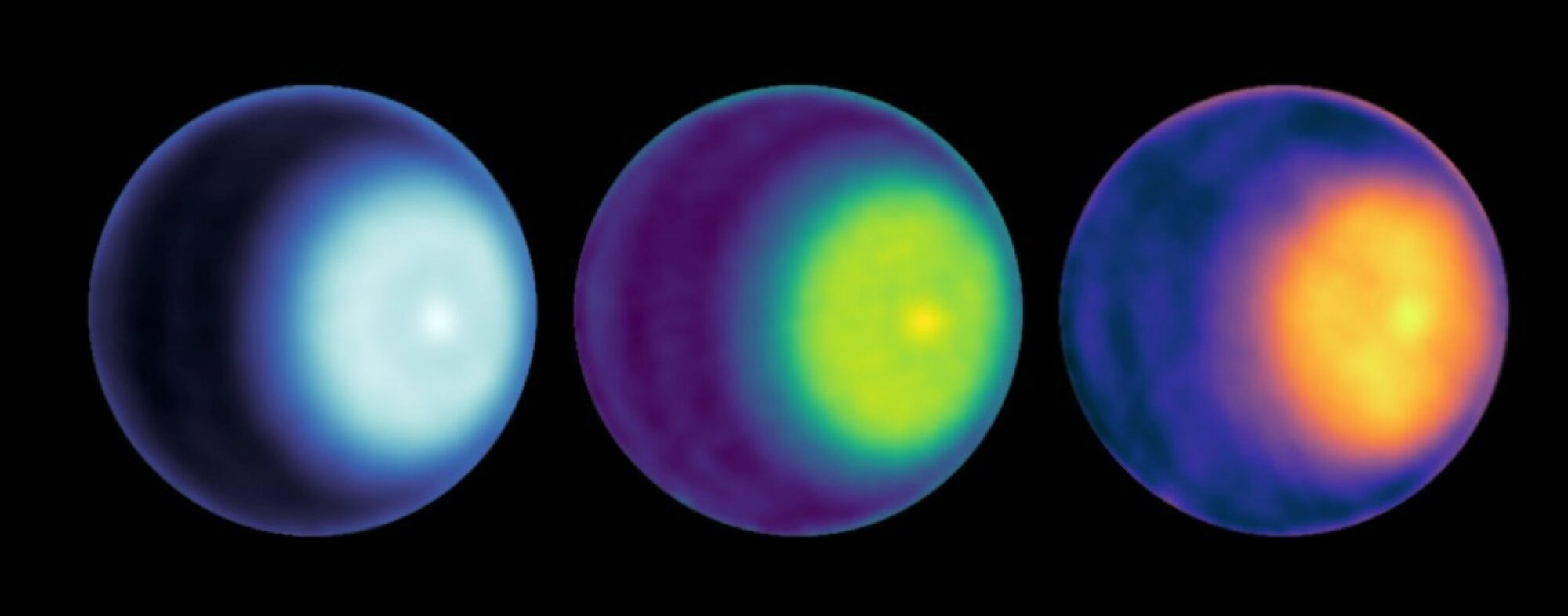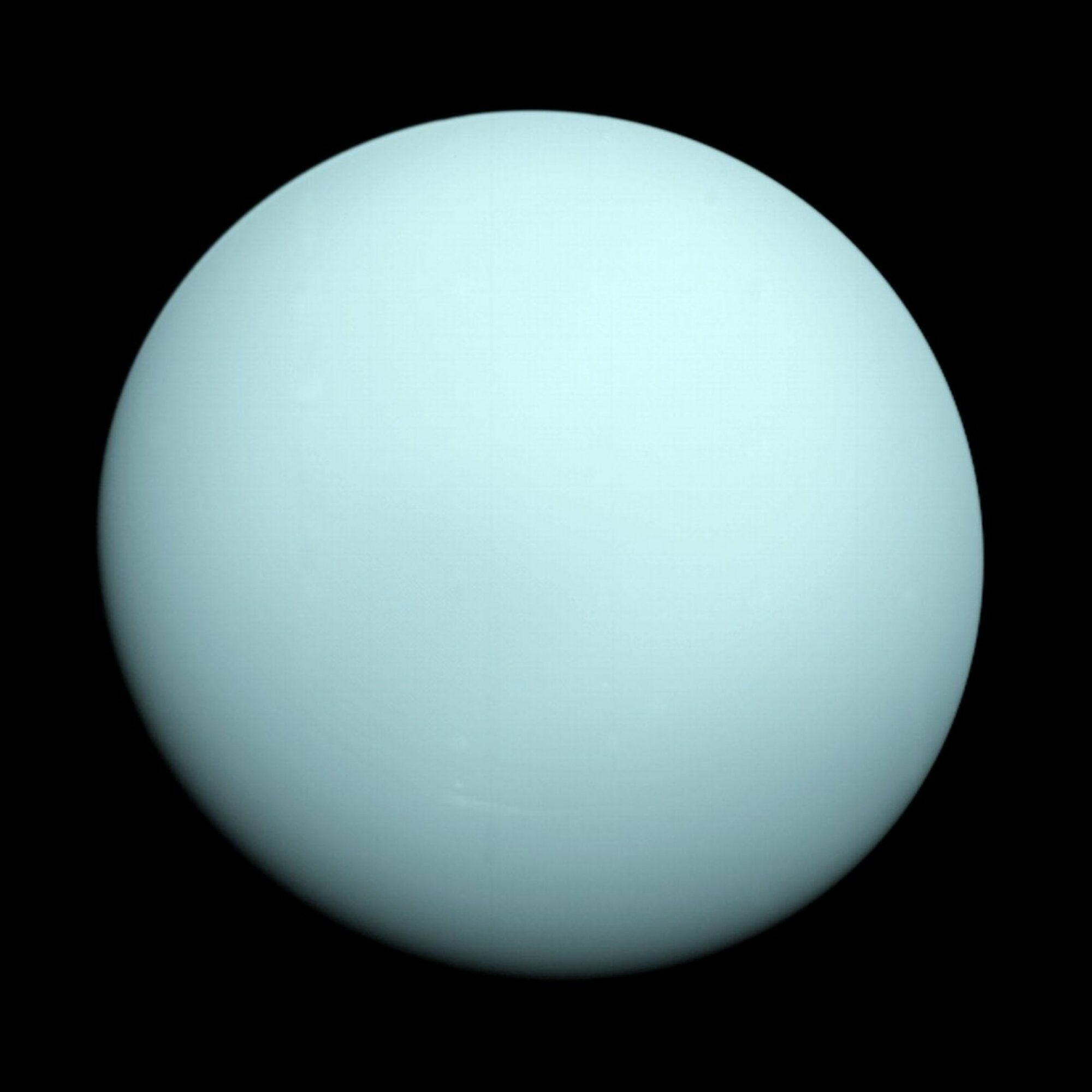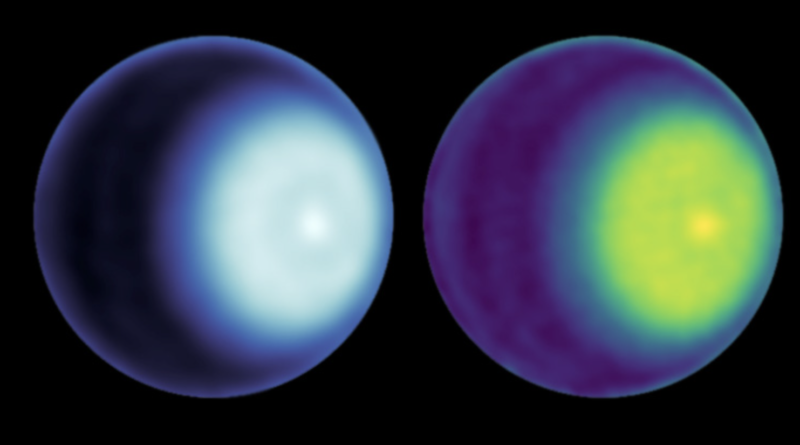There’s a massive vortex on Uranus

Uranus continues to intrigue.
Scientists peered deep into the curious giant icy planet, which is essentially spinning on its side, and captured evidence of a vigorously swirling cyclone in its north pole.
“These observations tell us a lot more about the story of Uranus. It’s a much more dynamic world than you might think,” NASA radio astronomer Alex Akins said in a statement. “It isn’t just a plain blue ball of gas. There’s a lot happening under the hood.”
The findings show that all planets in our solar system with an atmosphere share a similar quality: They have vortexes spinning around their poles. Parts of Earth’s northern polar vortex can infamously stoke extremely frigid winter events in the U.S., Europe, and beyond.
“It isn’t just a plain blue ball of gas. There’s a lot happening under the hood.”
The proof of a spinning cyclone on Uranus was made possible by repeated observations into the gaseous world’s cloud tops. Astronomers used radio telescopes, specifically the Very Large Array in New Mexico (made famous in the movie Contact) to see the swirling air beneath Uranus’ high atmosphere. (Radio telescopes view a different type of light than visible light telescopes like Hubble.) Researchers spotted the distinctive warmer and drier cyclonic winds.


Uranus is in our solar system, but it’s still some 1.8 billion miles away. It’s a largely mysterious place.
“The fact that we’re still finding out such simple things about how Uranus’ atmosphere works really gets me excited to find out more about this mysterious planet,” said NASA’s Akins.
Want more science and tech news delivered straight to your inbox? Sign up for Mashable’s Light Speed newsletter today.
We do know that it’s largely made of an icy fluid slurry of water, methane, and ammonia, which envelopes a rocky core. It has 13 rings. And 27 moons that we know about — some of which might harbor subsurface oceans.
What else is Uranus hiding?


